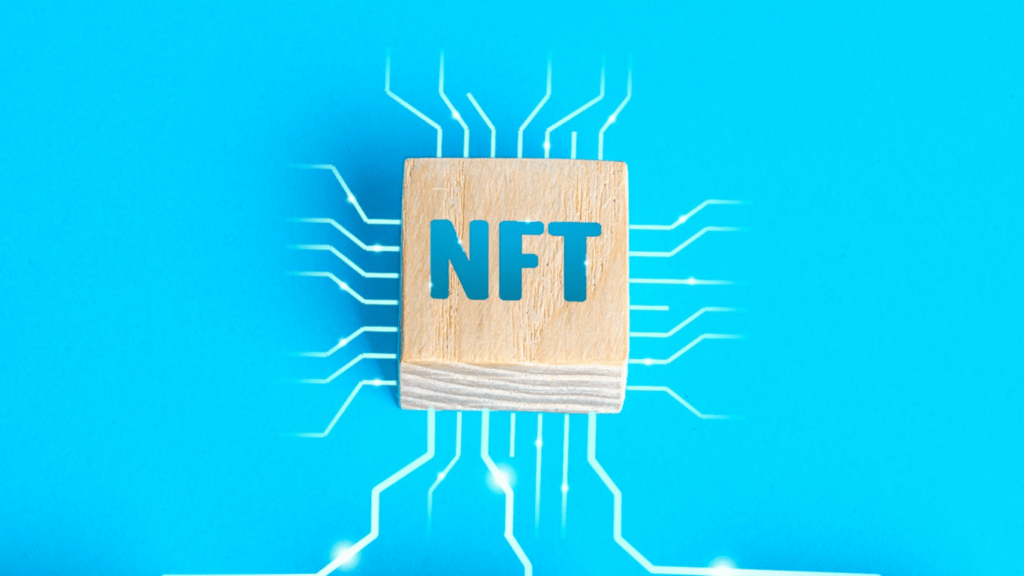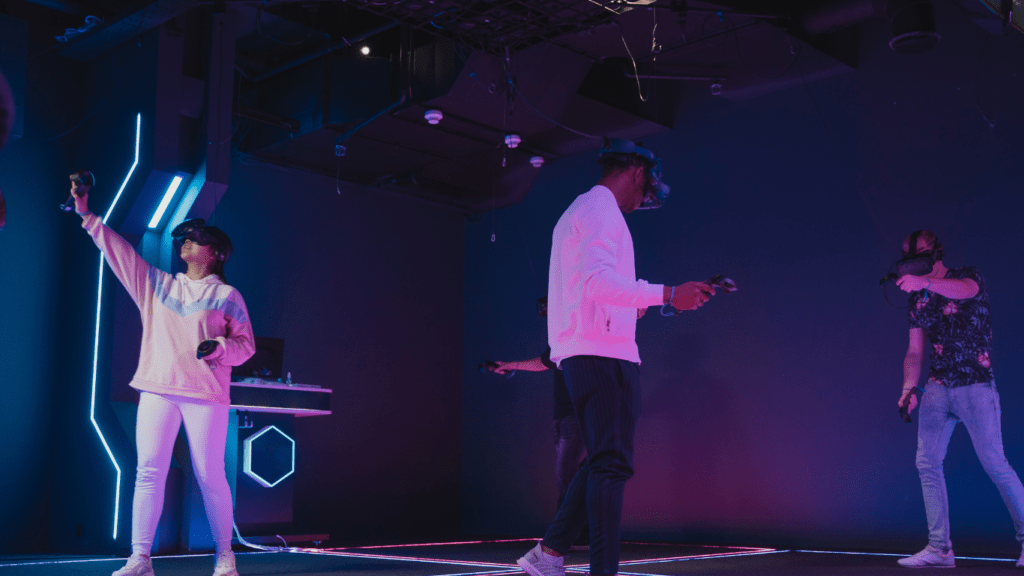What Are Non-Fungible Tokens (NFTs)?
Non-Fungible Tokens (NFTs) are unique digital assets verified using blockchain technology. Unlike cryptocurrencies such as Bitcoin or Ethereum, NFTs are indivisible and unique. Each NFT contains distinct information that differentiates it from any other token.
Cryptocurrencies like Bitcoin are fungible, meaning each unit is identical and interchangeable. However, NFTs represent ownership of a specific item or piece of content, making each one unique. For example, an NFT could represent a digital artwork, a video clip, or a virtual real estate parcel.
The uniqueness of NFTs is ensured through blockchain technology. Blockchains, digital ledgers recording transactions across many computers, certify the originality and ownership of NFTs. This technology makes it almost impossible to replicate or forge these tokens.
NFTs often use the Ethereum blockchain, relying on the ERC-721 and ERC-1155 standards. These standards provide distinctive token structures, ensuring each NFT remains a unique entity.
Examples of NFT use cases include digital art, music, gaming items, and virtual real estate. For example, the artist Beeple sold an NFT digital artwork for $69 million in 2021. In gaming, players can buy and sell unique in-game items represented as NFTs.
NFT marketplaces, such as OpenSea and Rarible, allow users to buy, sell, and trade NFTs. These platforms provide the infrastructure for creators to mint tokens and for collectors to acquire them.
Understanding NFTs involves recognizing their uniqueness, the role of blockchain in ensuring authenticity, and their growing applications in various digital domains.
How Do NFTs Work?
NFTs function by leveraging blockchain technology to verify uniqueness and ownership of digital assets. This underlying technology ensures that each NFT is one-of-a-kind and cannot be replicated.
The Blockchain Backbone
Blockchain ensures the transparent and secure verification of NFTs. NFTs are typically stored on the Ethereum blockchain, which supports NFT standards like ERC-721 and ERC-1155. A blockchain records every transaction, ensuring that the ownership history of each NFT is immutable and publicly accessible.
Smart Contracts and NFTs
Smart contracts automate and enforce the terms of NFT transactions. They are self-executing contracts with pre-defined rules directly written into code. When someone buys, sells, or transfers an NFT, smart contracts handle the transaction without intermediaries, ensuring that all parties adhere to the agreed terms.
NFT Use Cases and Applications
Non-Fungible Tokens (NFTs) have found several applications across various industries, enhancing the value and utility of digital assets through blockchain technology.
Art and Digital Collectibles
NFTs have revolutionized the art world, providing a digital platform for artists to monetize their creations. Artists mint their artworks as NFTs, ensuring authenticity and ownership.
For instance, Beeple’s digital artwork “Everydays: The First 5000 Days” sold for $69 million. Collectors buy, sell, and trade digital collectibles on platforms like OpenSea and Rarible, creating a robust digital art market.
Gaming and Virtual Worlds

In gaming, NFTs offer unique in-game items and characters. Players purchase, trade, and own digital assets, enhancing their gaming experience. Games like “Axie Infinity” allow players to own creatures, while “Decentraland” provides virtual land ownership. NFTs ensure provable scarcity and ownership, making digital items valuable and tradable.
Real Estate and Ownership Proofs
NFTs extend to virtual and physical real estate. Digital platforms like:
- Decentraland
- Cryptovoxels
enable users to buy and develop virtual land. For physical real estate, NFTs provide immutable proof of ownership and streamline transactions. Properties tokenize as NFTs, simplifying the buying process and ensuring secure ownership verification through blockchain.
By integrating NFTs across these sectors, the value and functionality of both digital and physical assets are enhanced. Blockchain technology underpins these advancements, ensuring security, authenticity, and traceability.
Buying and Selling NFTs
Learning how to buy and sell NFTs involves understanding the platforms and processes involved. NFTs are bought and sold on specific marketplaces that facilitate these transactions securely.
Popular NFT Marketplaces
Several NFT marketplaces are popular for buying and selling NFTs. OpenSea, one of the largest, allows users to browse a wide variety of digital assets. Rarible is another major player, enabling users to create, sell, and buy NFTs.
SuperRare focuses on high-quality digital art, providing a curated selection for art enthusiasts. Each marketplace has unique characteristics and benefits, making it essential to choose the right one.
| Marketplace | Key Features |
|---|---|
| OpenSea | Largest variety, user-friendly interface |
| Rarible | Supports minting, community governance |
| SuperRare | Curated digital art, artist-focused |
Steps to Acquire an NFT
Acquiring an NFT involves a straightforward process. Initially, set up a digital wallet compatible with the marketplace, like MetaMask. Next, fund the wallet with cryptocurrency, typically Ethereum.
Then, select a trusted marketplace to browse available NFTs. Upon finding an NFT to buy, place a bid or execute a direct purchase if a fixed price is listed. Complete the transaction by following the marketplace’s prompts, ensuring the NFT transfers into your digital wallet.
Risks and Considerations
Buying and selling NFTs comes with risks and considerations. NFTs can have volatile prices, causing significant financial fluctuation. Verify the authenticity and provenance of NFTs to avoid scams.
Transaction fees, especially gas fees on Ethereum, can be high and should be factored into the purchase. Regulatory and legal uncertainties around NFTs also introduce potential risks. Thorough research and due diligence are essential before engaging in any NFT transactions.
The Future of NFTs
NFTs represent a rapidly evolving technology transforming various sectors. Future developments and legal challenges will shape their trajectory.
Potential Developments
NFTs might see integration into mainstream sectors. For instance, luxury brands could tokenize rare items, providing verifiable digital certificates of authenticity.
Education could use NFTs to issue tamper-proof diplomas and certifications, ensuring they can’t be forged. Additionally, the integration of NFTs into social media will allow content creators to monetize their work directly, bypassing traditional platforms.
Legal and Regulatory Aspects
The legal landscape for NFTs is still developing. Different jurisdictions have varying rules on digital assets. For example, the SEC in the US might regulate NFTs linked to financial assets as securities.
Europe might focus more on consumer protection, requiring clear guidelines on authenticity and ownership. NFT creators and buyers must stay informed of evolving laws to ensure compliance, minimizing legal risks in this dynamic field.



 Chief Technology Officer (CTO)
As Chief Technology Officer, Victor Kenneyell oversees the technical infrastructure and development strategies of the website. With a background in computer science and blockchain engineering, Victor ensures that the platform remains at the forefront of technological advancements in the crypto industry. His expertise in smart contracts, cybersecurity, and blockchain scalability solutions helps the website provide users with a secure and innovative experience.
Chief Technology Officer (CTO)
As Chief Technology Officer, Victor Kenneyell oversees the technical infrastructure and development strategies of the website. With a background in computer science and blockchain engineering, Victor ensures that the platform remains at the forefront of technological advancements in the crypto industry. His expertise in smart contracts, cybersecurity, and blockchain scalability solutions helps the website provide users with a secure and innovative experience.
